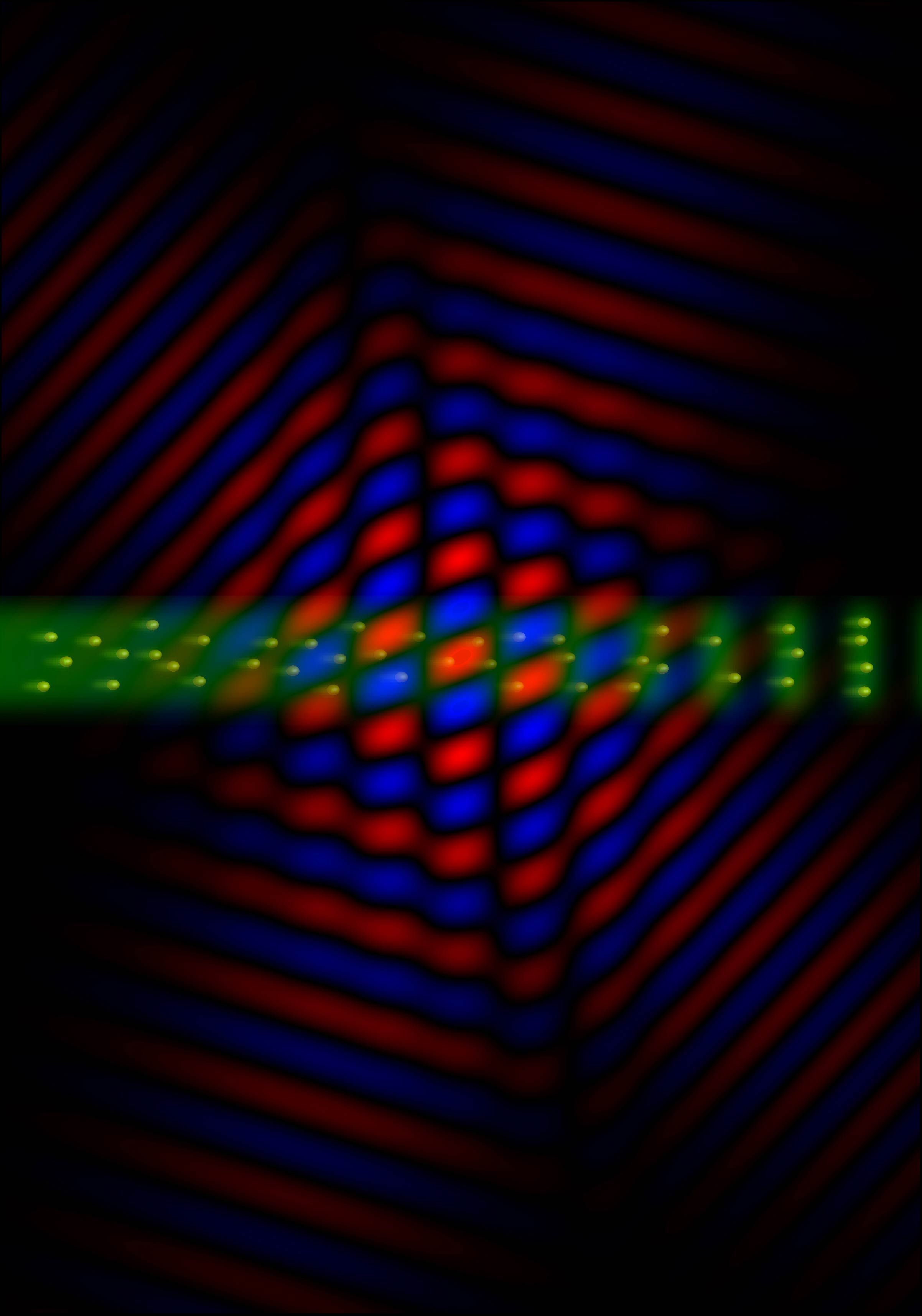Home Research CV Group members Publications Teaching Contact
Generation and application of attosecond electron pulses
 Ultrafast
electron diffraction and microscopy combine high temporal resolution
provided by femtosecond laser technology with atomic spatial resolution
enabled by the short de Broglie wavelength of electrons accelerated to
high energies. These imaging techniques provided an insight to
ultrafast atomic re-arrangements during phase transitions or chemical
reactions. Until recently, the lower limit of the temporal resolution
of approximately 100 fs did not allow to observe electronic dynamics
occurrig on shorter timescales (single femtoseconds or less). To reach
the attosecond frontier in imaging experients with pulsed electron
beams, techniques for electron compression by the interaction with
femtosecond laser fields have been developed. One of the techniques,
which is studied and employed in our group, is based on the
ponderomotive interaction between freely propagating electrons and an
optical travelling wave formed by two laser pulses at different
frequencies [1]. Demonstration of attosecond electron pulse trains
by this technique was already performed [2] and generation of isolated
attosecond pulses was theoretically proposed [3]. However, ultrafast
imaging
using compressed electrons is still a challenge and will be studied
during upcoming years.
Ultrafast
electron diffraction and microscopy combine high temporal resolution
provided by femtosecond laser technology with atomic spatial resolution
enabled by the short de Broglie wavelength of electrons accelerated to
high energies. These imaging techniques provided an insight to
ultrafast atomic re-arrangements during phase transitions or chemical
reactions. Until recently, the lower limit of the temporal resolution
of approximately 100 fs did not allow to observe electronic dynamics
occurrig on shorter timescales (single femtoseconds or less). To reach
the attosecond frontier in imaging experients with pulsed electron
beams, techniques for electron compression by the interaction with
femtosecond laser fields have been developed. One of the techniques,
which is studied and employed in our group, is based on the
ponderomotive interaction between freely propagating electrons and an
optical travelling wave formed by two laser pulses at different
frequencies [1]. Demonstration of attosecond electron pulse trains
by this technique was already performed [2] and generation of isolated
attosecond pulses was theoretically proposed [3]. However, ultrafast
imaging
using compressed electrons is still a challenge and will be studied
during upcoming years.References:
[1] M. Kozák, T. Eckstein, N. Schönenberger, and P. Hommelhoff, “Inelastic ponderomotive scattering of electrons at a high-intensity optical travelling wave in vacuum,“ Nat. Phys. 14, 121-125 (2018).
[2] M. Kozák, N. Schönenberger, and P. Hommelhoff, “Ponderomotive generation and detection of attosecond free-electron pulse trains,“ Phys. Rev. Lett. 120, 103203 (2018).
[3] M. Kozák, „All-optical scheme for generation of isolated attosecond electron pulses,“ Phys. Rev. Lett. 123, 203202 (2019).
Ultrafast strong-field phenomena in solids
The speed of contemporary elecronics is limited by a maximal frequency of switching and control of macroscopic electrical currents in solids. However, there are physical processes occurring on much shorter timescales, which could be used to increase the speed of information processing in future. These phenomena are investigated in our laboratory using ultrashort laser pulses reaching electric field amplitudes comparable or higher than the field between atoms in solids. Thanks to the precise control of both the temporal envelope and phase of the pulses on timescales of tens of attoseconds (1 as=10-18 s), this technology allows us to study and control coherent electronic dynamics in solid-state materials and nanostrutures.